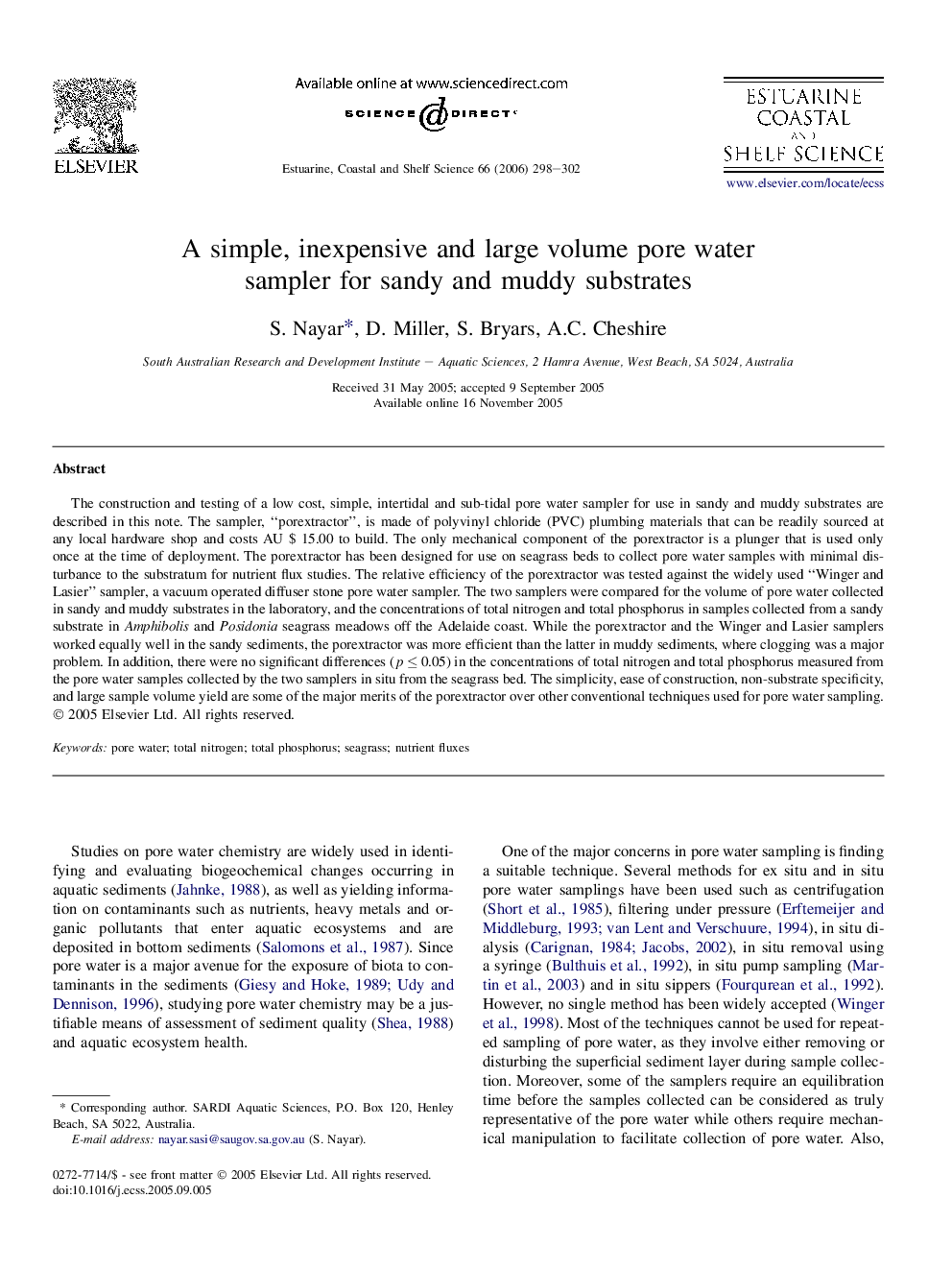| Article ID | Journal | Published Year | Pages | File Type |
|---|---|---|---|---|
| 4542584 | Estuarine, Coastal and Shelf Science | 2006 | 5 Pages |
The construction and testing of a low cost, simple, intertidal and sub-tidal pore water sampler for use in sandy and muddy substrates are described in this note. The sampler, “porextractor”, is made of polyvinyl chloride (PVC) plumbing materials that can be readily sourced at any local hardware shop and costs AU $ 15.00 to build. The only mechanical component of the porextractor is a plunger that is used only once at the time of deployment. The porextractor has been designed for use on seagrass beds to collect pore water samples with minimal disturbance to the substratum for nutrient flux studies. The relative efficiency of the porextractor was tested against the widely used “Winger and Lasier” sampler, a vacuum operated diffuser stone pore water sampler. The two samplers were compared for the volume of pore water collected in sandy and muddy substrates in the laboratory, and the concentrations of total nitrogen and total phosphorus in samples collected from a sandy substrate in Amphibolis and Posidonia seagrass meadows off the Adelaide coast. While the porextractor and the Winger and Lasier samplers worked equally well in the sandy sediments, the porextractor was more efficient than the latter in muddy sediments, where clogging was a major problem. In addition, there were no significant differences (p ≤ 0.05) in the concentrations of total nitrogen and total phosphorus measured from the pore water samples collected by the two samplers in situ from the seagrass bed. The simplicity, ease of construction, non-substrate specificity, and large sample volume yield are some of the major merits of the porextractor over other conventional techniques used for pore water sampling.
